Aries Cerat Heléne DAC and Incito S preamp
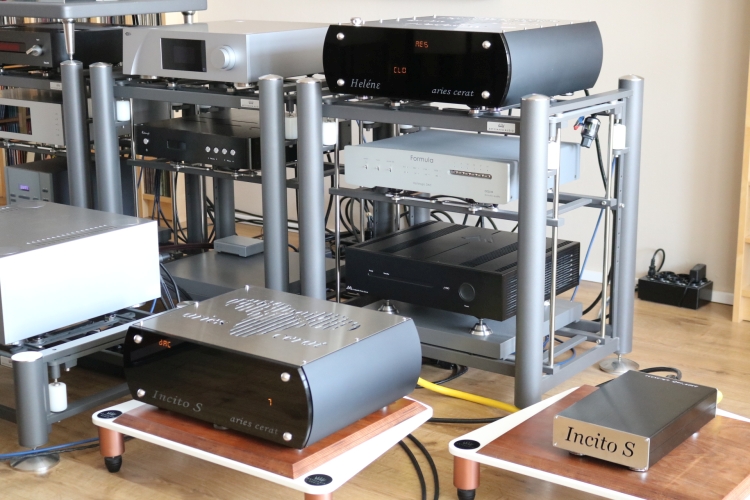
Review sample supplied by Callas Audio
Retail prices in the NL including 21% VAT:
Heléne DAC: 13.500 euro
Incito S preamp: 14.200 euro
Following his recent experiences with Wolf von Langa that led to purchasing the SONs, and subsequently acquiring the WvL dealership for the Netherlands, Ron Ploeger of Callas Audio proceeded to try a range of Aries Cerat equipment with his new speakers. The results were so groundbreakingly good that he decided to go all-Aries Cerat. Now, you should know that Ron has many decades of experience and knows good sound, so when he told me this, I took it very seriously. And when he asked if I wanted to do an Aries Cerat review, naturally, I was more than happy to!
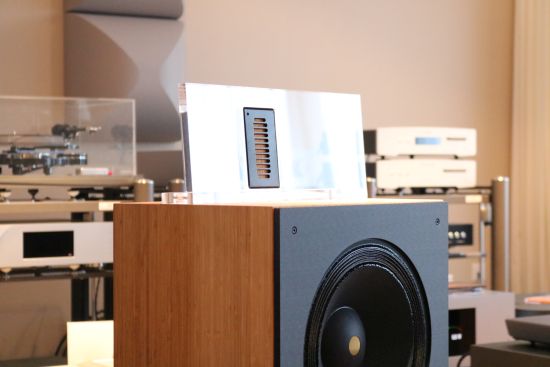
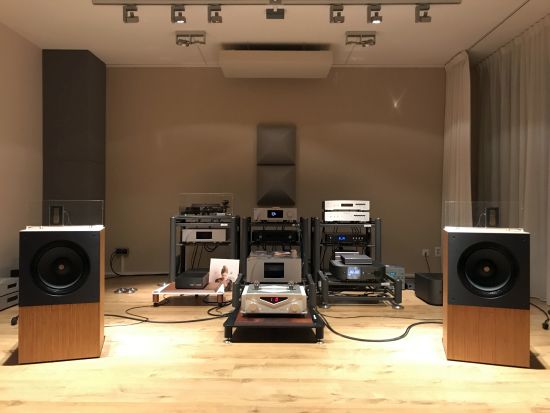
To read more about Ron and Callas Audio, or the WvL SON speakers, see the WvL SON review.
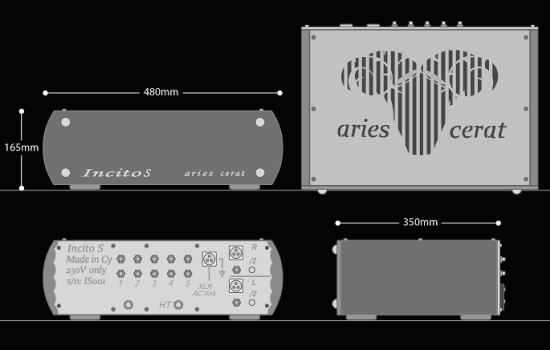
Technical Matters – Incito S preamp
In the heart of the Incito S preamplifier beats a zero-feedback power gain stage which consists of a small SET amplifier and a transformer-coupled, ultra-high trans-conductance E280F super triode. This tube, which is made primarily by Siemens, is loaded with the highest quality step-down transformer with a reconfigurable secondary winding to support switchable gain. Switches on the back re-configure the secondary winding to switch between 20db and 14db of max gain. Alternatively, the preamp can be ordered with a different amount of gain, and because of the high-sensitivity SON speakers, this is what Ron has done. My review sample has an 8dB gain.
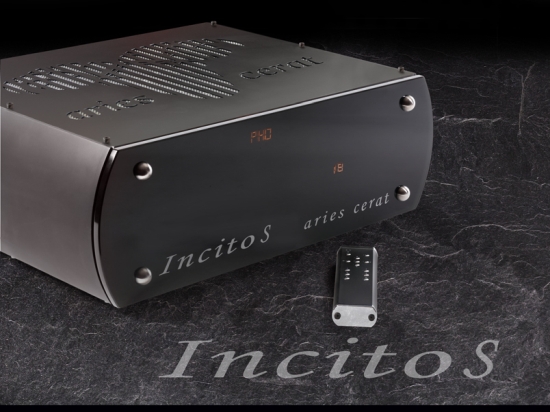
This small SET amplifier can provide voltage swings of over 320V, stepped down to 80Vpp while keeping transistor-like noise figures. The specially designed step-down transformer provides a very low output impedance with more than adequate current to drive any load down to 50 ohms. To enable this, the preamp required a robust power supply.
The power supply is built around the 5AR4 rectifier and uses separate double pi filtering for each channel with oversized chokes and high-speed capacitors. The power transformer is encased in an external chassis, connected with a permanent umbilical cord. This design choice led to improved noise floor figures of 20db, now well below the -110db mark.
For volume control, Aries Cerat used what is to their ears the best way of implementing a volume control apparatus, using a transformer. The Incito S uses the same TVC (Transformer Volume Control) and input system of the bigger preamplifiers in the range such as the Impera Reference and the same proprietary AC link technology is used for the biasing of the small SET amplifier.
One thing that fascinated me is how the transformer windings are selected? It seems not via relais, as no clicking sound is heard. I asked Stavros, Directing Manager of Aries Cerat about this and he replied:
“Yes, they are relay activated, just very quiet ones:) Also, the timing or click/release is important, as well as some other tricks we do, so that no
clicks are generated”.
The Incito S (for Special) contains two E280F gain tubes. The bias has been pre-set in the factory and should be correct. If desired, however, the user can alter and monitor the bias for the left and right tubes individually by the use of two potentiometers, a rocker switch, and a built-in display that can be seen through the top panel slits. The value should read between 1.8v and 2.8v, and ideally 2.3V.
There’s a ground lift switch on the rear that is operated with a key, like an ignition contact. It has 4 positions of which 2 are relevant: earth connected, or earth lifted. The vertical, upright position means earthed while the horizontal position means earth lifted. The manual mentions using the grounded vertical position only when using the RCA outputs. When using the XLR outputs, the earth should be lifted (horizontal position), or whenever the need arises to break a ground loop that leads to noise issues. I have listened to both positions using identical single-ended and balanced cables and found meaningful differences. All my findings can be found in the “Preliminary Listening” section below.
The beautiful supplied full-metal IR remote control offers control for display on/off, volume up/down, balance left/right, and direct 1-5 input select buttons. There’s even an HT-passthrough and it’s implemented very smartly. Rather than simply providing a unity-level passthrough, the Incito S can memorize any volume level for any of its inputs.
The company is of the opinion that all their units sound best when using single-ended connections but the Incito S preamp does offer both single-ended and balanced inputs and outputs. As with other components that do not use separate buffers for multiple outputs (for purity reasons), one should not use RCA and XLR output at the same time. Further, the maker warns not to use the XLR output of Incito S with pseudo-balanced inputs such as with the Genus power amp’s XLR input. With transistor designs, one could question the effectiveness of doing so because the connection would effectively be single-ended in spite of using a balanced cable, but it wouldn’t be harmful to either component.
This aspect intrigued me and so I asked Stavros, why not use the Incito S with pseudo-balanced inputs? He replied:
“This is a very important question. The Incito S XLR input only uses Pin 2 (hot side) and Pin1 (ground). Pin 3 is unconnected. Now, the Helene XLR output uses a floating secondary. That is, Pin 2 and Pin 3 are driven directly from the winding, while Pin 1 is floating.
If you connect Helene and Incito S using the XLR method, then not only is the winding terminated incorrectly, but the frequency response will also largely vary due to the asymmetrical loading of the winding. This is true for all floating secondary outputs when connected to asymmetric loadings, such as a pseudo-balanced input. The Incito S XLR output also has a floating secondary, this is why it should not be connected to pseudo balanced inputs (such as those on the Genus power amp for example).
In short, it is best to not connect Helene and Incito S using XLR, as the Frequency Response will be significantly varied. However, Ron has the optional true XLR input for the Incito S. That means it can use the XLR output of the Helene and any other XLR output from any source. That said, this is achieved by a conversion input transformer which will impose its own sonic signature of course. The RCA input, being native and without any conversion stage, will sound better, depending on the cable of course”.
The manual mentions that, when biased properly, the tube life of the E280F’s can exceed 9000 hours while the rectifier tube can exceed 6000 hours. Further, it mentions avoiding frequent on-off switching of the unit to preserve tube life. That’s why Ron simply always leaves them switched on and told me to do the same. I should note that in this case, the tubes will respectively last at most 250 and 375 days, or, in other words, you’ll need to swap the rectifier tube within a year and the gain tubes shortly thereafter. That said, the tubes are not particularly expensive.
Ron informed me that the E280F cost around 25 euro while the GZ34 cost 41 euro in the market. He added to expect a much longer lifetime service from the tubes than indicated by the manufacturer. Stavros added:
“Prices keep increasing lately, but they are still cheap considering you buy original NOS tubes for the price of what modern Chinese tubes cost :)”
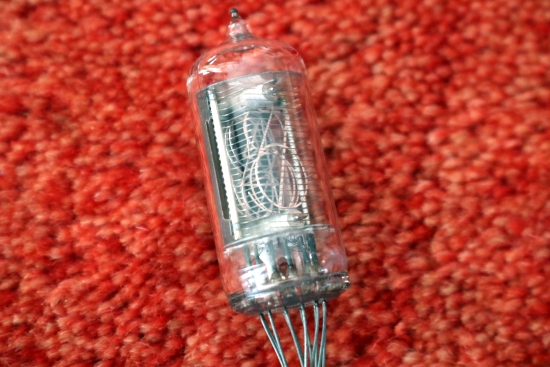
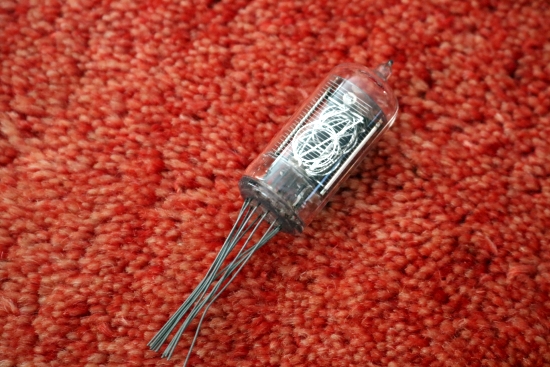
The thick black glass front panel hides rows and rows of Nixie tubes. These are vacuum tubes containing discrete numbers or letters. These devices are chosen by Aries Cerat for their lack of noise. That they look nostalgic, is an added bonus.

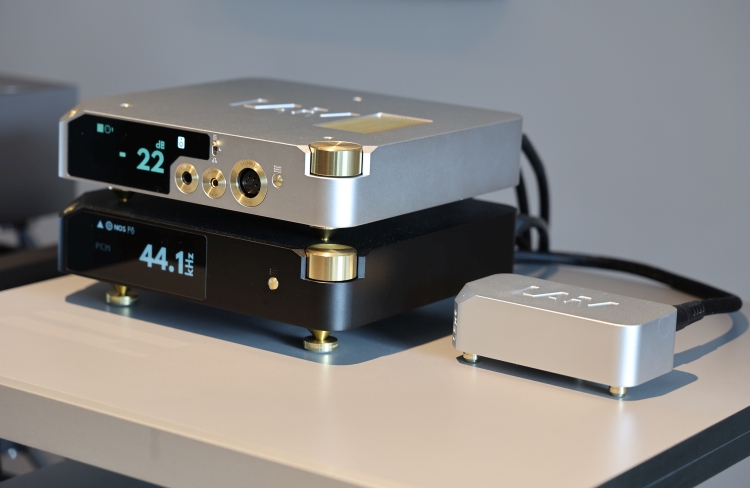





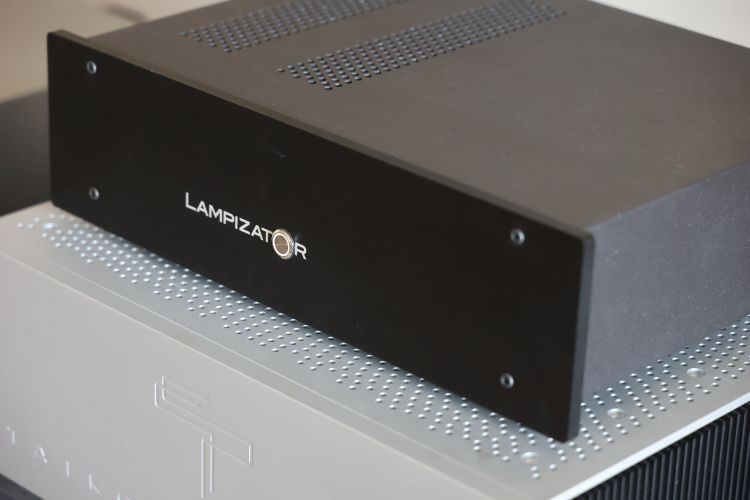
Christian,
Great review on a brand I’ve heard a little about but never seen a review of. And you’ve certainly proven what are some truisms for me, a preamp is crucial to ultimate sound quality, and all things being equal tubes are best. 😉 Now all things are rarely equal of course but that Incito preamp sounds pretty special I’ve always found a tubed preamp to have an outsized effect on overall sound quality. I doubt I’ll ever hear one but would love to.
Cheers,
Jon
Thanks, Jon, the Incito S truly is something else. And Ron tells me that the bigger preamp “walks all over it”… Gulp. I thought hard about which award to give it but even if I will have no higher praise than “Magnificent Masterpiece” to award, should I ever review the Impera preamp, I decided to award it to the Incito S.
Jon,
I discovered Christiaan’s website quite by chance recently. Since then, I stay tuned.
I am the very happy owner of an Aries Cerat *Incito* preamp (not the S version, so mine has an embedded power supply; the S version has a separate PS).
It easily replaced my YBA 1 preamp (which had a separate PS).
The Incito changed my system. That thing is not of this world. Period. Some say that Aries Cerat preamps are the only ones which decide the aficionados of passive preamps to abandon their fetish.
I attend to live concert regularly, so I do not like “typical” tubes devices (honey-topping on everything). This one is truly different. I was amazed by the amount of both body&liveliness, distinction&exuberance, flesh&transparency it could deliver. A dizzying ability to deliver qualities that other high-end devices have accustomed us to consider as opposites. Here, they are reconciled/synthesized with a stunning mastery.
Try to listen to one.
FYI, my *power amplifier* is a YBA Signature Classic stereo (100w), very “liquid”-sounding.
(I also listened to a whole Aries Cerat system, in a very good room: gobsmacking…)
Orfeo that’s very cool and quite a good system you have YBA is another brand somewhat underrepresented here in the US that I’ve never heard. The Incito sounds like an amazing piece of gear, I hope Aries Cerat will show their gear at US audio shows, whenever they start happening again. The Capitol Audiofest here in DC is my outlet for hearing gear I otherwise might now, And Orfeo may I ask what speakers you’re pushing with that lovely amplification stack?
Cheers,
Jon
P.S. Agreed Christian is one of the very best and most thorough reviewers out there.
Please allow me to report additional experiences with the Synergistic Orange fuses and Aries Cerat. The review mimics my own experience, and if it all stayed just like that it would be a very nice tweak to put it mildly. But after some week of daily playing, there is no less than a small transformation here.. the bold euphoric ‘technicolor’ impression at first date seem to shift into a more speedy, open and articulate sound. It sounds more balanced now, and all is like a wide open window onto the musical landscape. It may sound silly, but the Orange Fuses need playing… Both Genus, Incito and Heléne have the Orange in. Great stuff, highly recommended.
Thanks for the helpful feedback, Ron!
Wow THAT’s a review! Thank you very much Christiaan for the hard (pleasant) work such a thorough review must have required. Testing all combinations must have been very time-consuming.
Regarding the TUBES LIFECYCLE, I read in the review that
1. “the manual […] mentions avoiding frequent on-off switching of the unit to preserve tube life.”
2. “That’s why Ron simply always leaves them switched on and told me to do the same. I should note that in this case, the tubes will respectively last at most 250 and 375 days”
As a very happy owner of an Incito preamplifier since 2018, this grabbed my attention:
point 1: avoid “frequent” on-off switching. What do they call “frequent”? I always do max ONE on-off switch per day. I do not let the preamp burning all day when I am away. Moreover, I know that there are 5 chokes inside the Incito, so I suppose they damp the ‘brutality’ of on-off switches, don’t they? If so, what’s the point in keeping the device turned on? (except to avoid any warm-up time, which is a different issue).
However, regarding point 2, leaving the device ON permanently ensures the reviewer that the device plays at its full potential all the time indeed. Which is commendable, especially for a reviewer.
So, as far as I understand,
– if I leave the device ON all day, 24/7 => tube life=250/375 days (rectifiers/E280F, respectively)
– if I turn the device ON when I come back home, and OFF when I go to sleep => tube life=approx. 5 years, BUT a warm-up time has to be endured everyday. A warm-up of 30 min/1h is said to be sufficient, but not everyone agrees.
Am I correct? Or am I missing something?
Thanks.
Glad to hear you liked it, Orfeo! Indeed, this has been a lot of work, but when any question forms in my mind during a review, I NEED to investigate it and report on it. I can’t help myself…;-)
Regarding warm-up, in general, my experience is that 45 minutes gets you pretty much all the way there with most tube equipment, with small incremental improvements in the hours thereafter, for some equipment.
As for what constitutes frequent switching, that’s a great question but not one that I can answer. All I can say is that I personally prefer not to leave tube equipment on when I’m not listening to it. Typically, I have the Ayon gear switched on for around 5 hours per session but since they are in my secondary system, I only use it about once a week. The same applies to the Ayon Stealth that I use in combination with the turntables in the main system.
Perhaps Ron or Stavros are willing to get into more detail with regards to tube life versus power cycles.
Hello Orfeo
What is recommended, is turning the units on and off during your sessions, or maybe a few hours before. Though units can stay on 24/7 it is not really optimum for tube life.
What I would call frequent on-off, is the habit of very few people, turning on and off the units several times a day, listening for example for an hour, turning off, and then on again after a while.
Certainly 2-3 power cycles a day is far from calling it frequent on-off.
On turn on, though triple choke filtered, the rectifier is always having its roughest moment of the day 🙂
Cheers
Stavros
Tubes are a hotly debated topic. Of course, there are many different opinions, or different experiences. It is a choice to leave a tube DAC or Pre-amplifier always on or not. The suggested lifetime is just that; a suggestion, maybe a prediction. There are always extreme examples concerning tube lifetime, there are power amplifiers whose tubes after 25 years of continuous work still measure as new. Of course that is exemplary, and quite out of the ordinary. There are also known amplifiers that need new tubes about every year (..), and sometimes including the tube sockets. In principle it is a good idea to measure all tubes every (half) year, and to write down the values. Personally, I find it a bit too much to keep the Genus 813P in continuous operation, but the Incito and Heléne are fine for me. Only time will tell to what extent the GZ34 and E280F will decrease in measured values. It’s a balancing act, and for me personally, that choice is in favour of always leaving it on. As they say: Your Mileage May Vary. In the meantime; Keep spinning and enjoy the Music!
Are you using the preamp incito with the integrated amp genus. Is it advisable and does it make any improvement.
I have not tried this, so alas, cannot comment with any certainty. In general, I would not expect an integrated amp to very easily have a similar quality preamp on board as good as the Incito S. On the other hand, integrated preamps benefit of shorter signal paths and optimized circuitry. What I can also say is that pretty much any amplifier will allow you to hear the benefits of a better preamp. In fact, I’d rather have an expensive preamp and a less expensive power amp than the other way around. But ultimately, I cannot make any hard claims, only recommend to just try it.
I know from a VERY reliable source that
Incito preamp* + Genus P** does not quite equals a Genus integrated (because 1. shorter signal paths, as Christian said, and 2. identical volume control on both, i.e. relays).
*Incito preamp = ‘basic’ model, NON-S (=Prestige Series)
**Genus P = the POWER AMPLIFIER ONLY version of the Genus.
**BUT** if you consider the Incito S (=Reference Series) as a preamp, that becomes another story (the volume control here is better, with TVC system, that is based on a transformer; it is said to be the best volume control systems of all).
I have NO information regarding such a combination (Incito S + Genus P).
You don’t mention which gear you already own. But, as Christian said, yes, it is advisable to get the best possible preamp first, then see what you can later afford as a power amp, and which one does the best match with your speaker. This way, the preamp can become the tether of your system, the gear that will go along with you during all your audiophile life.
Happy listening.
Great reply, Orfeo!
Is de Dac Helene een meerwaarde voor mijn huidig systeem? Dit bestaat uit de Accuphase E600 en de B&W 803D3.
Is the Dac Helene an added value for my current system Accuphase E600 and B&W 803D3?
Hi Marc, I’m assuming you have the DAC board installed in the E600? In that case, the Helene will indeed have a lot to offer. What the converter board does very well is pacing, articulation, and dynamics. It’s not the best in terms of refinement, fluidity, and flow. And that’s exactly where the Helene does excel, among other things. Of course it depends on what you value most in the sound. In general, though, I’d say the Helene is considerably better. The only reservation against the Helene that I could think of is if you value bass tightness over all else. But that goes for a large majority of tube products.
Hi Christiaan. I want to know if Aries Cerat Dacs decode DSD. Although it´s rate samples is up to 24/384Khz, I couldn´t find if decode dsd or only PCM. Thanks
Hi Pablo, the Helene only converts PCM, no DSD.
Hi Christiaan, Just curious whether you’re still using the Orange fuses? Or have you moved back to previous uses or perhaps even “upward” in the SR line to say, their Master fuses. In any case, if you did switch, I’d be curious why.
These Aries Cerat products, as well as the fuses, were supplied for review. After publication, they all went back. I did not try any SR fuses in other equipment after that, mostly because I prefer tightness, control, and neutrality over smoothness, saturation, luxuriousness, or warmth. However, there are indeed other, more neutral SR fuses that I might try some day.
Thanks for the update on the fuses, Christiaan! So are using stock fuses now or the Hindi Tuning ones, perhaps?
I use stock fuses in all components. However, for the main system power supply, I do use a Siemens Sitor Cylindric Fuse Cartridge (with standard silver-plated fuse and solid silver rod), followed by GigaWatt G-044 Schuko Wall Sockets, and a PS Audio PowerPlant P20.
You can track all of my system components as well as the changes over time here: https://www.hifi-advice.com/blog/category/hfa-audio-setup-snapshots/
Thanks, Christiaan! Looking back on what you said, it’s interesting as the qualities you said you prefer are the ones that I seem to hear people attribute to SR fuses (over the ones you mentioned you don’t prefer):
“mostly because I prefer tightness, control, and neutrality over smoothness, saturation, luxuriousness, or warmth.”
So you noticed the SR fuses being smooth, saturated, luxurious and warm?
That is correct, I perceived the fuses I heard as part of this review as smooth, saturated, and luxurious They were less tight, crisp, and neutral than the standard fuse.